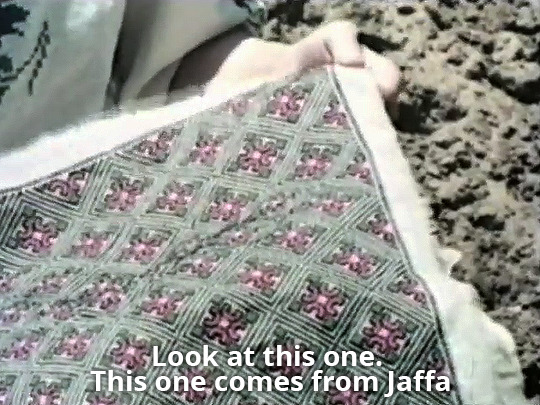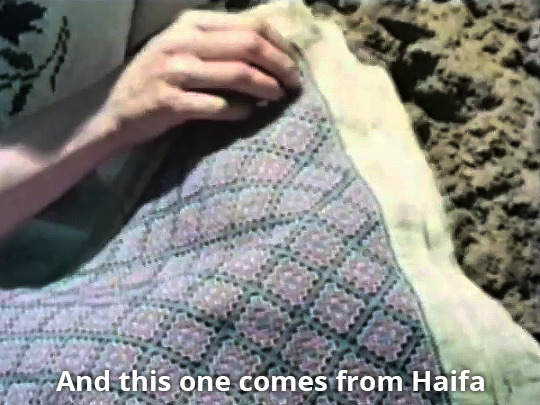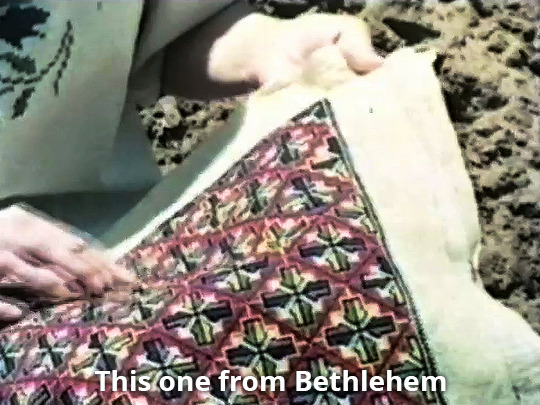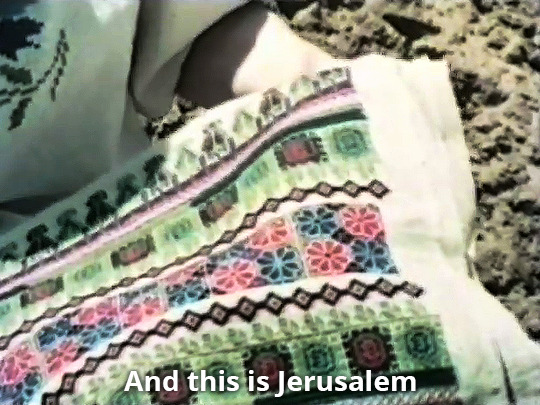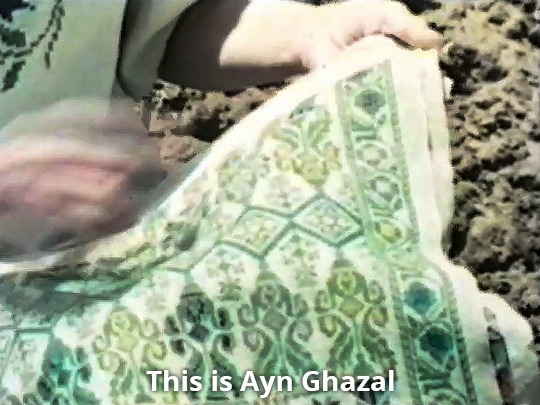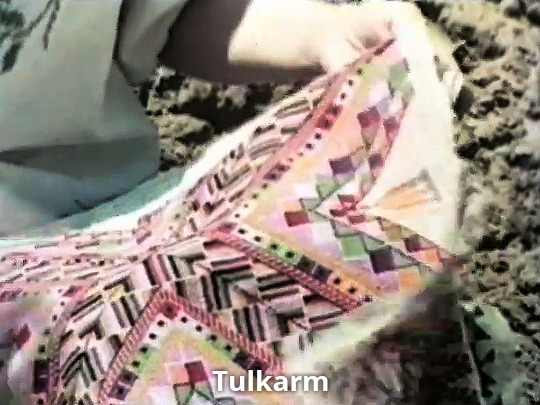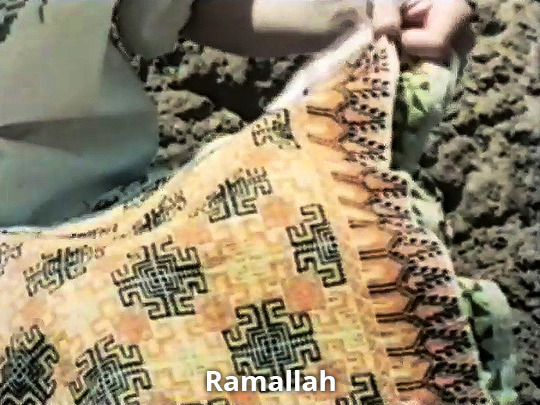Text
Resources for Mending Clothes
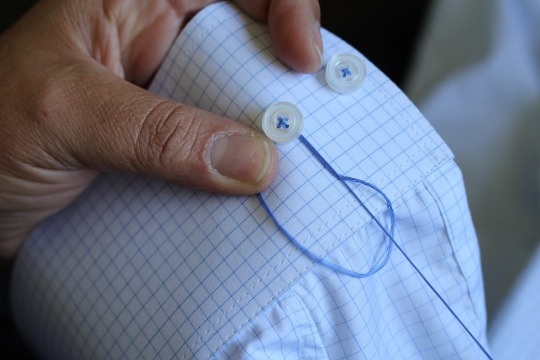
We toss out over 80 pounds of textiles each year. These textiles are often made of plastic materials (polyester, nylon), made in unethical conditions, dyed with harsh dyes that often get put into the rivers, etc. Even a single cotton shirt releases carbon emissions and uses tons of water.
So the best thing to prevent the unsustainable growth of the fashion industry is to make sure that your clothing lasts as long as possible. To do so, mending clothing is a must. So here are some resources to help you learn how to do various things, such as sewing a button, to tailoring clothes, or even upcycling old clothing into new styles.
* How to sew on three different types of button
* How to hand sew on a patch on a torn pair of jeans
* How to sew up a hole in an old shirt
* How to sew a simple T-shirt
* How to upcycle old clothing into new clothing
* More upcycle and sewing techniques
* How to repair a damaged sock
* How to do an invisible stitch
* 3 different stitches to work with for different results
* How to make a T-shirt smaller so it fits you better
* How to make repairs to your shoes
These are just a few of the things that you can do in order to make sure that your clothing lasts for a long time. Nobody wants to keep buying new clothing, as it is expensive and wasteful.
So making alterations to your clothing, or fixing small holes hen you see them can be hugely beneficial to your wallet, to garment workers, and to the environment in the long term.
96K notes
·
View notes
Text
I'm back on my sewing nonsense. This time we are finally going to make an 1850s dress (no, I haven't decided on the final fabric yet).
I got a mockup made for a yoked bodice and I think I got pretty darn close to the final design with only some minor adjustments.
And yes, I know my gathers are a mess. This was a mockup. I will be a lot more precise with the final dress.
#sewing#historical sewing#historical fashion#19th century#mid-19th century dress#1850s dress#yoked bodice dress#victorian fashion#sewing project#sewing mockup#sewing chaos#I don't know what I'm doing but somehow it keeps working out#the cozy cuttlefish
0 notes
Text
Today I am thinking about weaving.

I can knit and crochet, but those crafts didn't exist in Roman times. Any historically accurate Roman cloth must be woven. So when a little potholder loom jumped into my shopping basket for 50 cents, it felt like a sign I should learn.
One potholder that was 50% yarn and 50% weird gaps later, I looked up a tutorial, and realized why the damn thing was 50 cents. I needed a better, more adaptable loom. And, because I am a cheapskate and slightly loony, I decided to make one instead of buying it.

So, how does this thing work?
First, you string the warp threads up and down, around the pegs. Here, I made a zigzag shape. Then, you use a needle or shuttle to weave more yarn over and under the warp, horizontally, back and forth. This produces woven fabric.

Some looms weave from the top, some from the bottom. This Greek urn shows two weavers working from the top. The left weaver uses a rod to compact the woven fabric upward, keeping it even and sturdy. The right weaver is passing an oval-shaped shuttle through the warp threads to form another row.

Most Roman looms would have looked like this, with the finished cloth at the top. Unlike my looms, these are warp-weighted. That means you keep the warp yarns taut by hanging weights at the bottom, rather than through a bottom row of pegs.
Warp-weighted looms also have a big advantage over my little potholder loom: you can easily create multiple sheds.
A "shed" is a temporary gap between lifted strands and non-lifted strands. Instead of having to go over and under each strand individually, you raise the entire shed, then pull the shuttle or needle straight through. This saves lots of time! Then, to weave the next row, you close the shed, lift up a different set of threads to create a new shed, and send the shuttle/needle through the other direction.

On a warp-weighted loom, the sheds are opened by loops called heddles (H), which are attached to a heddle rod (G). When the rod is down, shed (1) is open (middle diagram). When you pull the rod up, shed (1) closes and shed (2) opens instead (right diagram). Most warp-weighted looms also have a pair of forks you can rest the heddle rod on, to free your hands.

Here, there are three heddle rods and sets of forks, the heddles are white, and the warp thread is red. This gives you four different sheds, and the potential to weave very complex patterns indeed. Not bad for a device invented over 6500 years ago!
I liked the multiple heddle-rod design so much, I tried incorporating it into my DIY loom, too. I've tested both yarn and paperclips as heddles:

I actually got both sheds and heddle-rods working, too. Which is pretty cool for a lap loom - every other lap loom I found only has one shed, so you have to go over-under the individual threads on alternate rows.* More time-consuming. However, the sheds here are narrow, and I'll need a smaller and smoother shuttle to pass through them smoothly. This wouldn't be an issue on a warp-weighted loom, where the warp hangs freely downward, and can move more flexibly with the heddles.
Anyway. I may get a "real" loom at some point, but I wanted to build one first, and I think it gave me more appreciation for just how resourceful ancient weavers were. They created technology, clothing, and artwork out of very basic materials, and civilization depended on these skills.
Now, I need to go finish the...whatever the hell it will be. Big thanks to Wikipedia and to the lovely Youtubers who make this craft easier to learn. I think it'll be a lot of fun.
(*Edit - found out a rotating heddle bar can make two sheds on a lap loom! Exciting!!)
331 notes
·
View notes
Text
The one bizarre thing to me about textiles is that warp-weighted weaving is at least 6500 years old, but our oldest knitted artifacts are only ~1000 years old, and crochet 200 years old. Even though you need less equipment to knit (two sticks) or crochet (one hook) compared to warp-weighted weaving (frame, loom weights, batting, heddles). Why the big gaps between these inventions? And why did each one appear and spread when it did?
1K notes
·
View notes
Text
Been a couple days but I've been a busy bee!
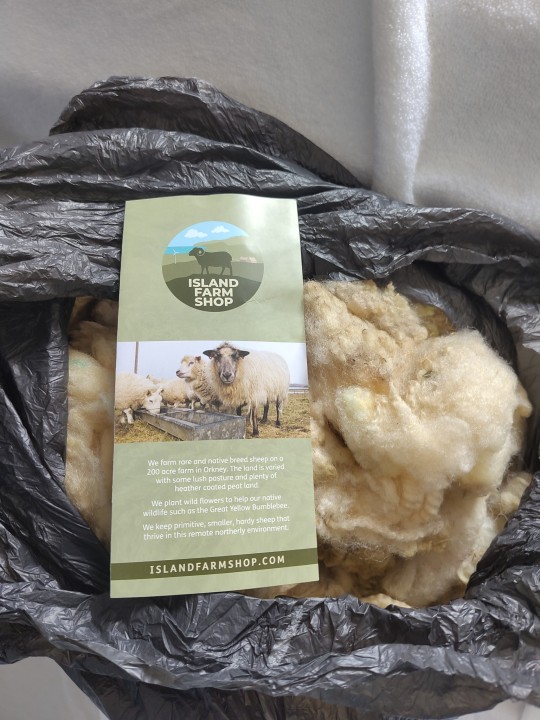

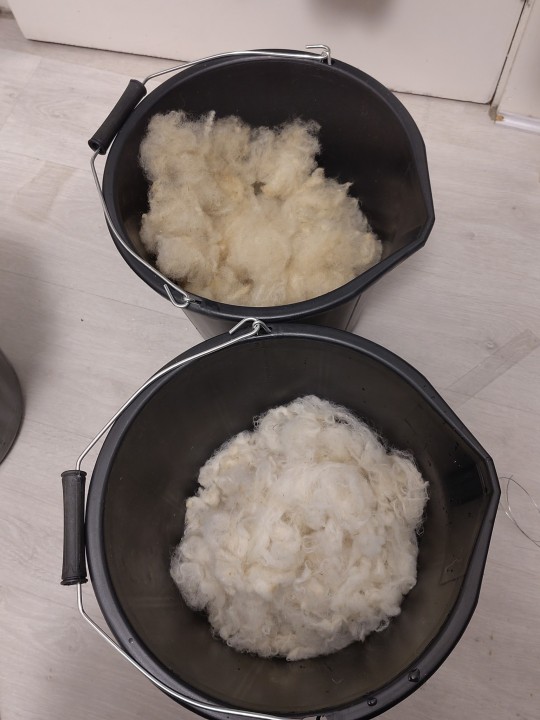

The Shetland Cheviot fleece I ordered came in a couple days ago and I've been working on scouring it! It cleans up really well!! It's slow going but I'm having fun. Wool combs are on pause while I wash it, because I don't want it sitting unwashed for longer than it Has to, but we'll get there!
I got this fleece on eBay from the island farm shop up in Orkney. I don't know enough about fleeces to say much on it, to be honest, but it's been nice enough to work with and cleans up really well. I'm enjoying it even if it's hard work!
16 notes
·
View notes
Text
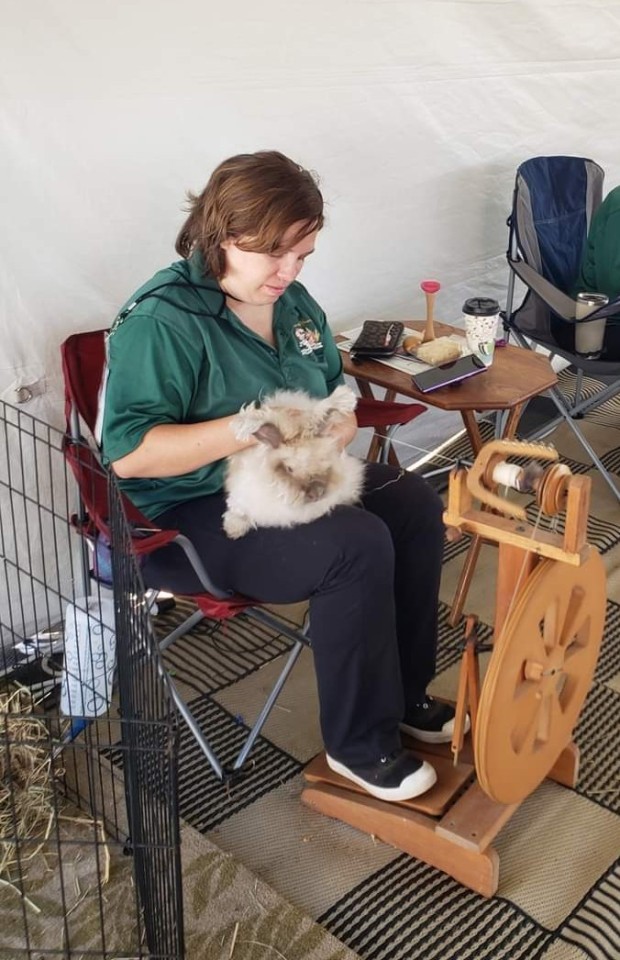

Spinning right from the bunny. He was off course naturally shedding, and was perfectly content to let me take the fiber from him.
32K notes
·
View notes
Text
I am going to make this a separate post, since the other one got so long.
So, like I mentioned there, I sent my grandma's granny squares off to my Loose Ends "finisher" with the intent of giving my mother the blanket when it was complete. I had NO thoughts in my head at all for saving something for myself.
When I received the box in August with the completed blanket, it had two additional things in it. It had a letter and a bag. The bag had two and a half skeins of left over yarn (please peep the picture of all they yarn I sent this lady, I was SO surprised she was able to use so much of it!) my grandmother's crochet hook, and a single granny square. In the letter, my finisher, Katherine, wrote that she set aside one of the original squares my grandma made--she specifically said the one she guessed may have been one of the first--in order to put it in a central place in the finished blanket. But then she forgot about it when she went to put the blank together, so now there was one left over. She said she sent it along with the blanket, hoping it would still find a home.
So, like I said in my last post, I gathered up the blanket and brought it to my mom....but I kept that lone granny square for myself. I immediately knew what I wanted to do with it:


I bought this little shadow box on Amazon, pinned in the granny square, and added my grandma's hook. I plan on hanging it in my little crafting zone in my apartment ❤️
Just another reason why the Loose Ends Project has my heart in a chokehold. There was so much thought and kindness that went into what Katherine did--for both me and my mom.
1K notes
·
View notes
Text

As the turtle grows, it consumes it's warm, wooly nest to grow it's shell.
134 notes
·
View notes
Text

Marvin would like everyone to know that he has feetsies
5K notes
·
View notes
Text
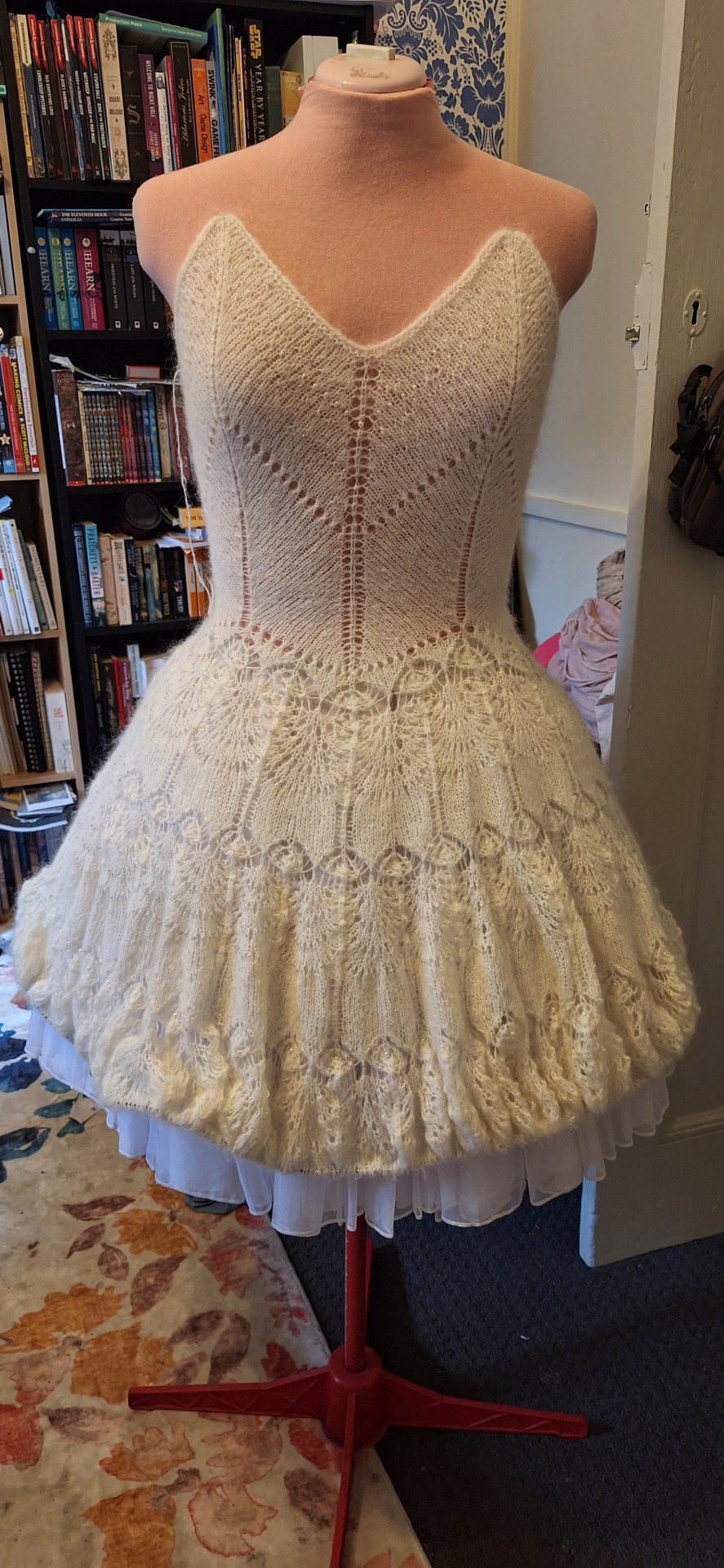

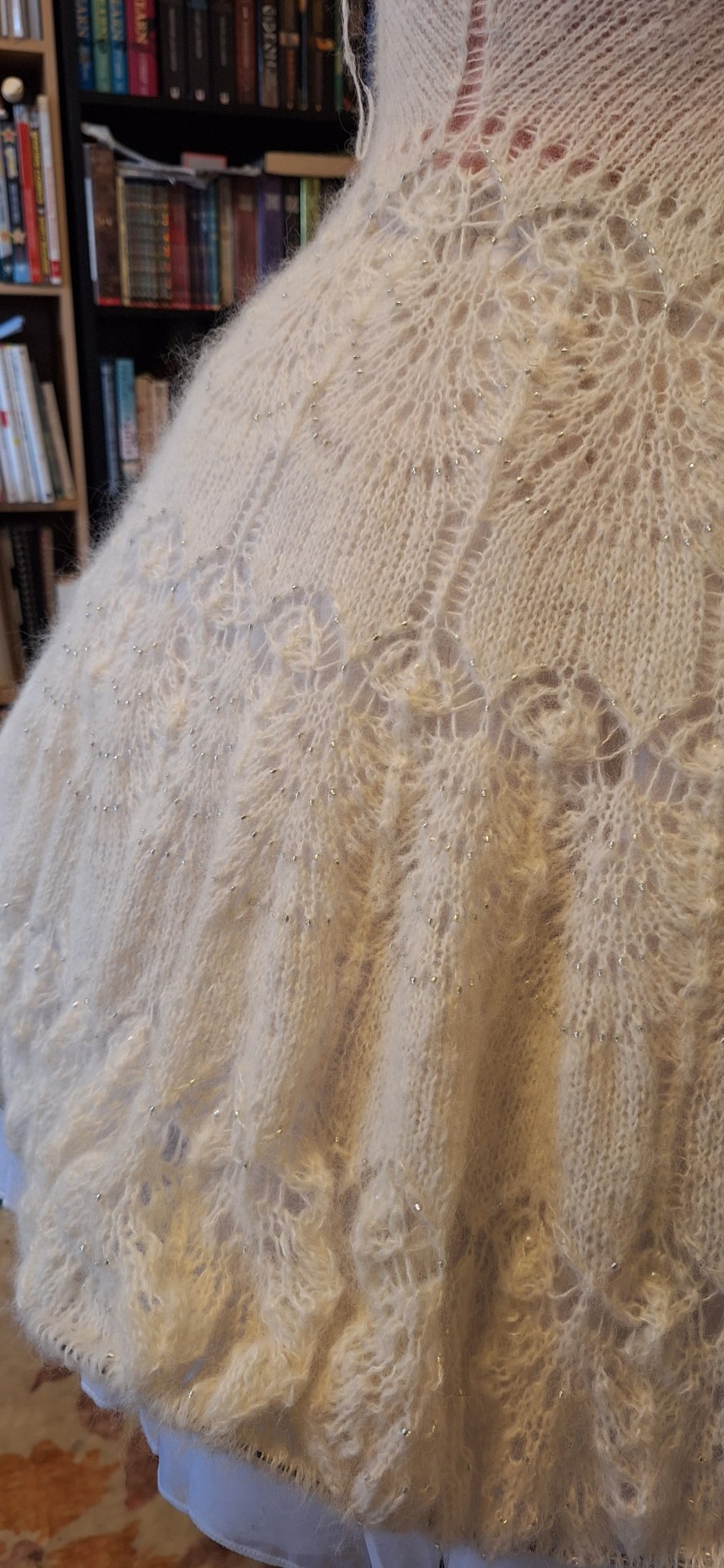
So I think I forgot to post about it here but I'm knitting my own wedding dress.
Edit to add materials: I'm using suri silk alpaca (apparently I'm slightly allergic to mohair?), and glass beads for the silvery and pearl beads.
3K notes
·
View notes
Text
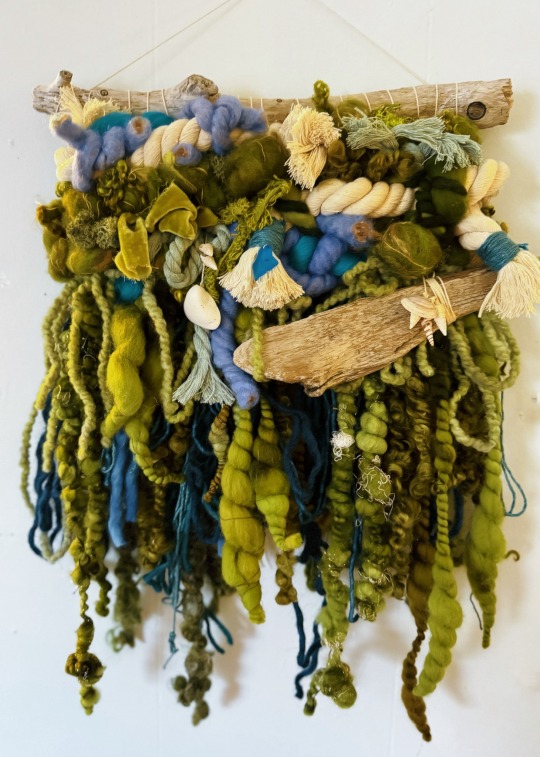
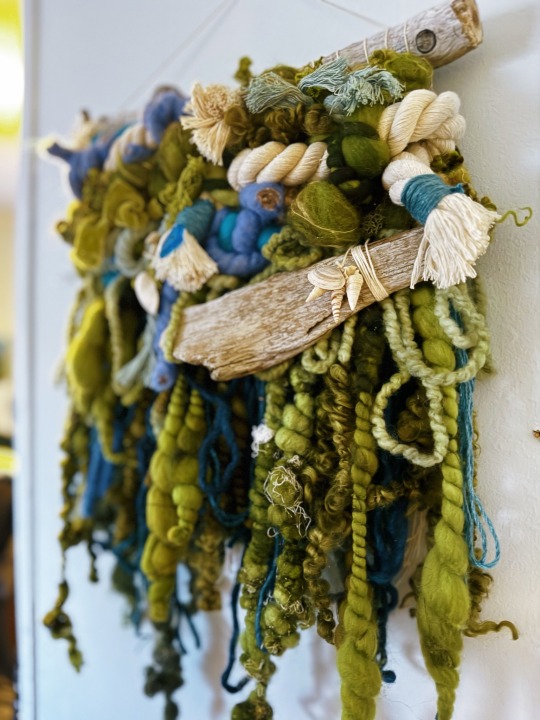


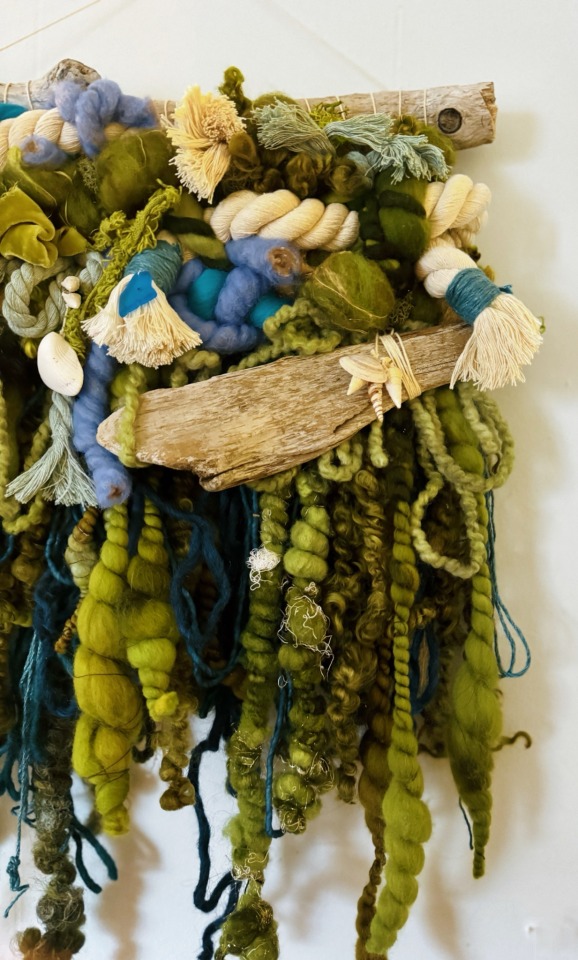
A little ode to my home state.
I found the little sea glass piece at a local bead store 🤗
28 notes
·
View notes
Text
I finished knitting a cabled cardigan. The pattern is Kildalton by Kate Davies. The yarn is Josef and Anni from Abundant Earth Fibers in the pepper colorway.
I prefer to knit top down sweaters and this pattern is bottom up, but it was so well written. I absolutely love how this sweater turned out.
Of course, I immediately cast on another sweater. It's lace weight, and I will probably have regrets later.
I also found out my dog's genetic makeup, so that's fun.
1 note
·
View note
Text
I keep not taking good pictures… but the sweater is so close! I’m working on the ribbing of the collar and I may finish it tonight
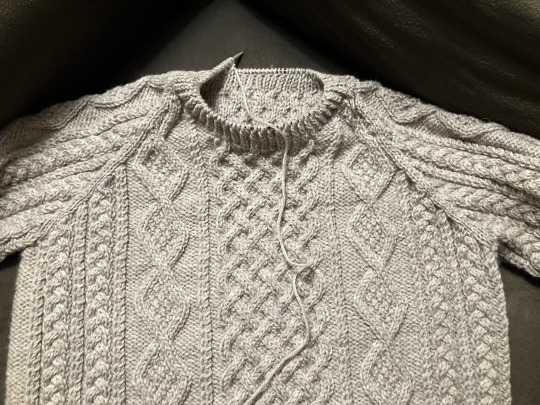
14 notes
·
View notes
Text
So, I crochet.
And I know this is where I put my fic and stuff. But except for occasional life updates I tend to keep it to that.
But.
I've worked on this for 3 months and I'm proud as absolute hell.
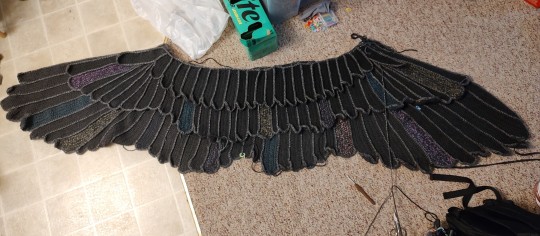
It measures around 6 1/2 ft (214cm) across and I'm quite proud.
I still have to actually assemble it, and that is going to be a whole ordeal, but still.
I'm really proud of this.
Not being able to work and struggling to write with all my recent health issues has really taken a lot out of me. Just kind of sitting around being useless and expensive.
But I MADE this.
With my own two hands.
And it feels good to actually make something.
So yeah.
Just thought I'd share.
Love y'all.
- Lacy
827 notes
·
View notes
